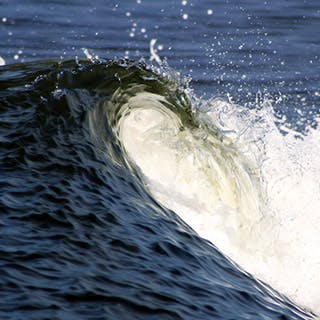 2014 presents a “perishable moment” in the effort to protect the world from catastrophic climate change. The parties to the UN Framework Convention on Climate Change (UNFCCC) have promised to reach a new global agreement in 2015, and the steps taken this year will determine whether it is weak or strong.
2014 presents a “perishable moment” in the effort to protect the world from catastrophic climate change. The parties to the UN Framework Convention on Climate Change (UNFCCC) have promised to reach a new global agreement in 2015, and the steps taken this year will determine whether it is weak or strong.
The UN Climate Summit called by the Secretary-General for September 23 in New York will be a major inflection point on this journey, setting expectations for success in 2015. Additionally, this year the Intergovernmental Panel on Climate Change (IPCC) will complete its Fifth Assessment Report on Climate Change, the U.S. will issue a new National Climate Assessment, and two major economic reports on climate change – from a U.S. and global perspective – will be published. As coming months build momentum for action on climate change, here are three climate waves to catch in 2014:
1st wave – Here and now: We are feeling the impacts, and the world is abuzz with the issue of extreme weather. In Australia, over 150 temperature records were broken in 90 days, while devastating floods in the United Kingdom wreaked damage throughout the country.
“Climate change is real. It’s here,” Senate Majority Leader Harry Reid said last night during a climate change talkathon in the U.S. Senate to elevate and raise urgency about the issue. #Up4Climate trended on Twitter through the event, putting climate change and the need for action onto social, news, and political radars across the country. New policy guidance issued yesterday by Secretary of State John Kerry to diplomats around the world directed all chiefs of mission to lead on strong climate action, both at home and abroad.
2nd wave – Faces and places: Major science and economic reports and a new television series will tell us what is happening where. In a few weeks, the IPCC will release its second of three reports – on the consequences and impacts of climate change. Two weeks later, the IPCC will release a third report, on solutions to mitigate climate change. These will build on a new assessment by the U.S. and UK science academies last month that cited “incontrovertible evidence of planetary-scale warming.”
On April 13, a new eight-part television event, Years of Living Dangerously, will premiere on Showtime, documenting the crippling effects of climate change and the way individuals, communities, and governments are working to find solutions. With personalities like Don Cheadle, Mark Bittman, and Lesley Stahl reporting on the people, cities, and livelihoods affected by climate change, Years will use faces and places to show the reality of those impacts and make it personal. Two weeks later, on April 28, a new U.S. National Climate Assessment will be released, informing us about already observed changes, current conditions, and anticipated trends for the future.
This summer two major new economic assessments will be completed. The first, called Risky Business, will examine the costs to the U.S. of failing to act on climate change – it is led by hard-headed financial figures like Hank Paulson and Michael Bloomberg. The second, the New Climate Economy project chaired by former Mexican President Felipe Calderon, will unpack the opportunity side of the equation – the payoff from the transition to a low-carbon clean energy economy.
This stream of science and economic reports will tell us about the faces and places impacted and at risk because of climate change.
3rd wave – Taking the local global: World leaders will shift their attention toward building a global agreement based on successful actions locally, regionally, and nationally. In September, the UN Secretary-General will host a Climate Summit for heads of state to make new commitments to action – on their own and in partnership with business. At the end of the year, Peru will host the 20th Conference of the Parties (COP20) to the UNFCCC to lay the groundwork for a new climate agreement. In these international moments, country leaders can link up actions taking place at state and local levels to make major strides towards agreement.
These three waves on climate change promise to raise the visibility of the issue and build momentum for a new agreement at the end of 2015 in Paris. That’s still more than 20 months away, but the seeds of success will be planted this year. Don’t miss your chance to help ensure the health, safety, and prosperity of future generations.
TAKE ACTION: Catch the wave — visit Climasphere.org, follow @climasphere on Twitter, or like Climasphere on Facebook at to increase the surge of awareness on climate change.



 View All Blog Posts
View All Blog Posts